Manufacturing Leadership Council Elects Two New Industry Leaders to Board of Governors
Washington, D.C. – The Manufacturing Leadership Council, the digital transformation division of the National Association of Manufacturers, has announced the election of Dow Global Operations Director for Operational Excellence and Leveraged Services Tim O’Neal and PIC Trailers President Bryan Van Itallie to the MLC’s Board of Governors. The MLC is the nation’s leading networking and executive leadership organization dedicated to digital transformation in manufacturing by focusing on the technological, organizational and leadership dimensions of change.

O’Neal is responsible for improving the performance of people and processes through continuous learning, professional development, effective teams and cost-effective implementations. He also leads strategic initiatives for operations, including digital strategy. He has been with Dow for 23 years and has lead initiatives in environmental, health, safety and sustainability; supply chain; R&D; logistics; and operations IT technology.
Van Itallie leads all aspects of PIC’s business and has led development of a new, metrics-driven vision, mission, core values and strategic plan for the company. He has increased the company’s monthly revenue; developed and launched new intermodal chassis; spearheaded a company culture transformation; and improved talent development and management to better align employee skills.

“The addition of Tim and Bryan brings robust skill sets and deep experience to the MLC board, and we welcome their fresh perspectives,” said Cooley Group President and CEO and MLC Board of Governors Chairman Dan Dwight. “Collaborations like these are essential not only for strengthening the MLC, but also for improving the industry’s future.”
“The MLC is fortunate to have a dedicated group of industry experts to guide and shape our mission as manufacturing’s digital landscape continues to evolve,” said MLC Founder, Executive Director and Vice President David R. Brousell. “These new additions further enhance the depth and breadth of knowledge on our board and solidify our position as an organization that is at the forefront of digital manufacturing.”
As an advisory body, the MLC Board of Governors provides guidance to the MLC on its annual Critical Issues agenda, research studies and programs and services for the MLC membership.
-About the MLC-
Founded in 2008 and now a division of the National Association of Manufacturers, the Manufacturing Leadership Council’s mission is to help manufacturing companies transition to the digital model of manufacturing by focusing on the technological, organizational and leadership dimensions of change. With more than 2,500 senior-level members from many of the world’s leading manufacturing companies, the MLC focuses on the intersection of advanced digital technologies and the business, identifying growth and improvement opportunities in the operation, organization and leadership of manufacturing enterprises as they pursue their journeys to Manufacturing 4.0.
Exploring Automation and Culture at Amazon
From garage to global giant: how innovation, data and machine learning drive Amazon’s BFI4 Fulfillment Center

Nearly 30 years ago, in a Seattle-area garage, Jeff Bezos and the few employees of his upstart online retailer, Amazon, knelt on the floor to pack customer orders into boxes. One evening, Bezos suggested ordering kneepads to make the work more comfortable. One of his workers respectfully disagreed and suggested they order packing tables instead – an option that proved to be better for worker satisfaction and throughput. This early example of centering durable needs, rather than immediate or short-term needs, exemplifies the culture of innovation that now permeates Amazon.
During MLC’s sold-out tour of Amazon’s BFI4 Fulfillment Center cohosted by Amazon Business and Amazon Web Services, participants got a behind-the-scenes look at how the company sorts and packages thousands of items per day for delivery to customers. The tour also provided insights into Amazon’s approach to data, supply chain and procurement, offering a deep dive into the progression of the company’s culture from its early days.
During his presentation on the culture of innovation, Clint Schneider, Amazon Web Services’ Digital Innovation Lead for Smart Factories, shared how culture, mechanisms, architecture and organization lead to better innovation. Schneider explained how Amazon’s decision-making process uses the concept of “one-way” or “two-way” doors to make high-quality, high-velocity decisions. A one-way door represents a significant decision like should Amazon build a new facility, while a two-way door represents something less critical, like changing the buy button’s color.
Using the one-way versus two-way door analysis helps the company innovate faster with a bias for action. If it is a two-way door, they know they do not have to deliberate as long. Instead, they can run the experiment and move back through the door to adjust or revert if the decision does not produce the intended results and ROI.
Automation and Innovation at Amazon’s BFI4 Fulfillment Center
“This is what we manufacture,” Julius Yu, General Manager of Amazon’s BFI4 Fulfillment Center shares as he holds one of the thousands of packed boxes filled with a customer’s order that move by the MLC tour group as they walk through the facility. “Everything we manufacture here is unique.”
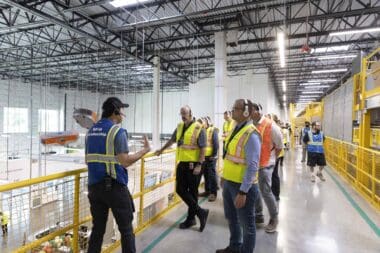
BFI4 handles millions of units per week, each with a distinct mix of “parts” that are sorted, picked, packed, inspected, sealed, labeled and distributed for delivery. BFI4 is Amazon’s eighth iteration of an Amazon robotics fulfillment center. In total, BFI4 has thousands of mobile robots storing and transporting products between stations where they are manually sorted for storage then picked and packed for delivery.
At the sort station, employees put items into random bins for storage until a customer orders the product. Using a vision system, a camera takes a picture of where the item has been randomly placed so that it can be retrieved and transported via AMR to the pick station when ordered.
After the product is ordered and delivered to the pick station, a control panel tells employees where it is located on the rack so they can move it into a bin to be packed into a customer’s box. Computer vision verifies the number of items in each bin, taking pictures to ensure accuracy.
Harnessing Data to Improve Efficiency
Data, data management, and data contextualization are integral to operations at BFI4. The company generates terabytes of data to ensure end-to-end transparency. Machine learning helps determine which fulfillment center or distribution center across the country should house each product, using historical ordering patterns with about 60% accuracy. These determinations help to improve delivery speeds, and have resulted in more efficient delivery routes. While machine learning hasn’t helped Amazon achieve 100% accuracy yet, Yu is optimistic that advancements in technology, computing power and artificial intelligence will improve precision.
One notable innovation using data is a custom box maker. For orders that include a single item, Amazon’s machine will custom cut cardboard to create a shipping box. The custom box maker relies on product data to determine the correct size of the box so that it can fit snug around the product. The downstream benefits are significant. The company can fit more boxes into trucks, for example, which is a positive for both sustainability and throughput.
An Immersive Amazon Experience
Participants enjoyed a networking reception the evening prior to the tour featuring entertainment by Washington-based 2019 American Idol contestant Kazmyn, food options from local vendors, and a trip to Amazon’s iconic Banana Stand – all hosted in Amazon’s Spheres, an innovative coworking space. The reception gave participants an opportunity to network with fellow tour participants and Amazon ambassadors while immersed in a unique Amazon workspace ecosystem.

Following the tour, attendees engaged with a panel of Amazon experts including Julius Yu, Brian Steward (Director of Worldwide Amazon Business Operations), and Mobeen Khan (Director, Global Business Development and Partnerships), facilitated by MLC’s Senior Content Director, Penelope Brown. The panelists addressed questions about the BFI4 facility, data, culture, safety and Amazon’s processes.
The Amazon tour experience concluded with a session titled “Manufacturing at Amazon: The Future, Faster, Together,” covering three pillars for manufacturing’s future: data as a foundation, AWS supply chain, and strategic procurement.
For participants, the tour proved to be a fascinating opportunity to see how far Amazon has come since those earliest days when employees packed customer orders in a garage and where the company’s culture of innovation may lead it in the future.
Building a Generative AI-Powered Digital Twin
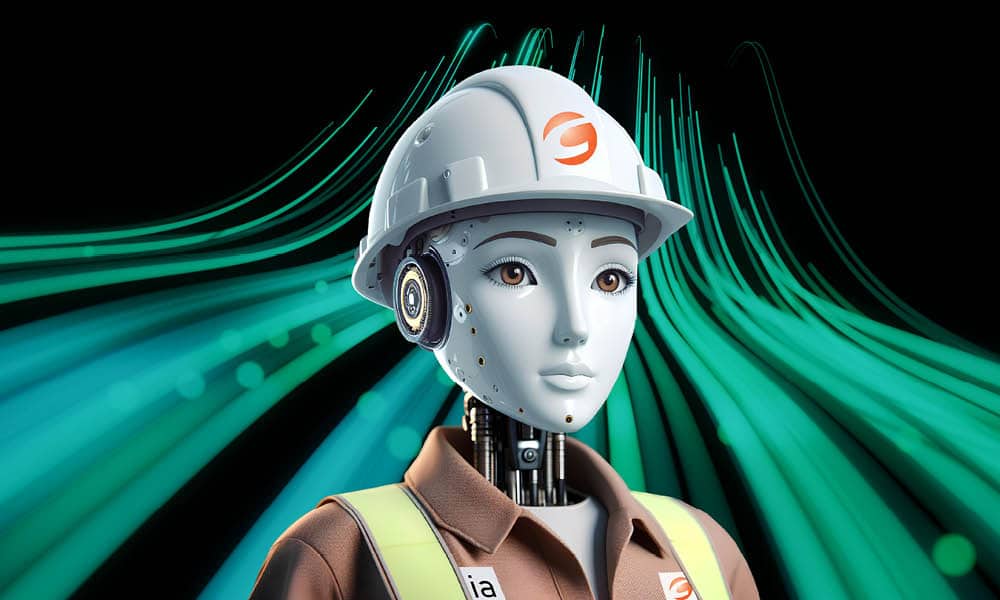
As part of its accelerated digitalization journey, Celanese has developed a generative AI chatbot to serve as a user-friendly interface to its Digital Twin.

TAKEAWAYS:
● Digital transformation requires getting the data into the hands of experts who will build, deploy, and scale hundreds of use cases.
● A generative AI chatbot can function as an everyday manufacturing assistant to support those use cases.
● Celanese’s digital platform and standardized knowledge graph, supported by its AI chatbot Celia, is already reaping returns in multiple areas, from troubleshooting and production performance to improved decision making.
Celanese is on a journey to transform its manufacturing processes into autonomous, integrated, and optimized digital plants — and at the heart of it is a user-friendly, generative AI-powered chatbot named Celia. Think of Celia as a copilot that can integrate into workflows and provide real-time suggestions, explanations, and feedback during industrial processes to users in easily understandable, native language. Celia retrieves that information it’s providing through its connection to the unified digital platform and its comprehensive knowledge graph.
Celia was put in place to provide a synergy between users and generative AI models that will enhance the quality and accuracy of results and foster faster, more informed decision making. Celanese believes its digital transformation is an ongoing journey to put data into the hands of experts who will build, deploy, and scale hundreds of use cases.
With the digital platform that Celanese is using and its ability to scale, the Celia copilot is designed to function as an everyday manufacturing assistant to the company’s manufacturing operations personnel by supporting use cases including incident management, real-time process plant optimization, automatic EIP isolations, connected worker, asset performance management, incident management, and real-time process optimization.
While the project is a work in progress, Celanese, a global manufacturer of special materials and chemical products used in most major industries and consumer applications, has realized real value … and it’s just getting started.
Project Evolution
Celia is the latest development in the company’s accelerated digitalization journey. The journey started with replicating each actual physical asset at its Clear Lake, Texas, manufacturing site in a pilot in May 2022. The digital twin foundation scale was then implemented at 30 sites in 2023. While this is a technological development, it has always been centered around designing solutions for real people that go beyond being just user-friendly interfaces to constituting repeatable processes that leverage design principles and human insights to address future opportunities.
The digital twin implementation alone was a leap forward in troubleshooting, collaboration, historical data tracking and trending, and improved compliance, among other benefits.
“Think of Celia as a copilot that can seamlessly integrate into workflows and provide real-time suggestions, explanations, and feedback.”
Keeping with that human-centric focus, Celia was launched in the fall of 2023 to drive value, insights, and further enhancements to production, processes, and people engagement. Celia’s detailed industrial knowledge graph spans more than 30 manufacturing sites and integrates operational, engineering, and process data to provide a complete digital representation it can use to understand and optimize operations.
With the rollout of Celia across many of its manufacturing sites, Celanese has already successfully improved visibility, collaboration, provided instantaneous insights on troubleshooting and production performance, provided results of forecasts/predictions alongside AI/ML, improved decision making, and reduced time spent on data discovery and analysis.
Transforming Workflows, Reducing Downtimes
In less than a year since launch, Celia has equipped employees with contextualized information at their fingertips. For example, the AI chatbot has leveraged the knowledge graph to transform workflows for operators by enabling tasks such as operator rounds being executed more efficiently. Celia has also provided troubleshooting insights that connect maintenance notifications and work orders, maintenance instructions, operator manuals and standard operating procedures that help advise operators and maintenance staff with recommended actions to take.
Celia has also eliminated energy accounting and billing errors by generating real-time insights into internal operational factors, as well as integrating to external energy prices. Compliance and audits have benefitted from Celia comparing site policies and procedures to corporate policy procedures and generating gap closure actions in just minutes (compared to what previously took days), rather than the time and effort it took to manually do these comparisons to support gap assessments and develop action plans.
“Celia has already provided employees with contextualized information at their fingertips.”
Catalyst inventory management is also reaping benefits with Celia. The AI chatbot now can digitally track, estimate, and inspect the company’s precious metal inventory across manufacturing sites, including incoming and outgoing shipments between the warehouse, vendors, and operating units. Digitally accounting for the inventory enables Celanese to continuously update its estimates of price, amounts and quality — and helps to reduce total amount of inventory.
Lastly, troubleshooting is more efficient with Celia. Celanese has successfully used it to optimize performance at one of its largest facilities by providing anomalies in real-time price forecasting and insights that enabled the company to make decisions on managing downtime that resulted in cost avoidance.
Innovating for the Future
Many tactical approaches focus too much on the discrete business solutions at hand instead of strategically architecting to solve current challenges, while also unlocking subsequent business solutions. Celanese wanted to shift to a platform architecture that would enable an open solution development acceleration model, allowing the company to leverage AI/ML and generative AI at scale to drive value.
The opportunities for future uses of generative AI to create repeatable, optimized, and autonomous digital solutions continue to be explored by Celanese for its chemical and specialty materials manufacturing facilities globally. M
COMPANY FACT FILE
Name: Celanese Corporation
Sector: Specialty materials and chemical products
Global HQ location: Irving, Texas
Revenues: 2023 net sales of $10.9 billion
Employees: 12,400
Web url: http://www.celanese.com
About the authors:

Sue Pelletier is a contributing editor with the Manufacturing Leadership Journal.
Dialogue: Change is the Only Constant

Cooley Group President and CEO, Dan Dwight – our 2024 Manufacturing Leader of the Year – explores digital transformation, cultural change and what’s next.
Jeff Puma: Hello everybody and welcome to our third edition of the Manufacturing Leadership Journal Executive Dialogue series. We’re excited today to be joined by Dan Dwight, Cooley Group president and CEO, and this is an exciting time to have Dan with us. For those who were at the Manufacturing Leadership Awards this year you know that Cooley Group was a finalist in three categories: AI and Machine Learning, Operational Excellence, and Transformative Business Cultures. And, on top of that, they won the Small and Medium Enterprise Manufacturer of the Year, the Manufacturing in 2030 Award, and individually Dan was awarded Manufacturing Leader of the Year.
Dan, welcome and congrats on all that recognition and all the great work you’re doing at Cooley Group.
Dan Dwight: Great, thank you. I appreciate it and appreciate the recognition by my fellow manufacturing peers in the industry. So thank you.
JP: Let’s jump into some questions here. In your time leading Cooley Group, you have overseen a sweeping and large-scale digital transformation of the company’s operations. Given your experience what do you think are the essential qualities that manufacturing leaders need to have in the digital era?
DD: In my view a successful, large-scale digital transformation requires not only an operational transformation, but also cultural and leadership transformations. Successful leadership in the digital era demands, among other things, a higher level of transparency across the organization. This transparency enables a higher level of employee engagement in the transformational processes. Your team needs to see the road map in front of them because successful and sweeping transformations are extremely time consuming with a lot of jagged edges that the leadership team needs to address. Cooley is a decade into our transformation, and we have the battle scars to show for it, but in the process our digital leadership team has created a high, high level of team member transparency and engagement that is driving constant change.

“Missteps today could leave companies adrift amid the AI sea change and unable to navigate new market realities.”
JP: So you’re a decade in and you alluded to some of that change that’s happening. Beyond strategizing and deploying an update to your technologies, you’ve also made many strategic business culture changes. What are the key cultural elements that can enable a successful digital transform?
DD: Cooley’s digital transformation actually began with a cultural transformation built around becoming more agile and adaptable. Every decision we make places long-term resiliency and cross functional collaboration as our operational North Star. As a consequence of prioritizing collaboration, Cooley decentralized our decision-making structures, eliminating hierarchal instruction and empowering team members to communicate transparently and more frequently. Everyone at Cooley, in every role across all our facilities, deserves credit for making us more resilient. Our organizational resilience allows us to separate whatever macroeconomic, pandemic, supply chain shortage and market turmoil the world throws at us from our long-term global market and financial successes.
JP: Cooley is a small/medium enterprise so you have a great understanding of digital transformation and how it applies to an organization that isn’t as huge as some of those other big dogs out there. There are some challenges that go with that. Do you think small and medium enterprises risk getting left behind in the digital era and what needs to happen to help them succeed?
DD: I always take some exception to this line of questioning in that I believe businesses often make a false assumption about getting left behind because of their size. For over a decade I’ve been leading a middle market manufacturing company that’s nearing its 100th anniversary. Our longevity is built on using our size to actually our advantage. We are more resilient, more agile, more adaptable than our competitors who are often a multiple our size because we constantly invest in pro-growth strategies regardless of the economic environment. Our investments in innovation generate consistent new product revenue of over 20%, and our investments in Manufacturing M4.0 digitization generate consistent, robust productivity dividends.
JP: Can you give a 30,000-foot overview of how Cooley progressed through its digital journey?

“Instead of using predetermined rules, gen AI identifies data patterns to create new, unique content.”
DD: A decade ago Cooley was a 90-year-old polymer coater textile company on the verge of bankruptcy. The team threw rocks at our storage silos to measure inventory levels. Some of our legacy equipment dated back to 1965. We began a much needed cultural and digital transformation.
Fast forward to 2024, we transformed into a highly collaborative, data-driven enterprise. And by 2025 we are on plan to have all our extruders in all our factories be self-correcting through AI and machine learning.
I am tremendously proud of what we have accomplished. Our team learned to accept that change is the only constant and that a long-term digital growth strategy creates greater and lasting shareholder value. Collaboratively we have built and continued to build a company worth celebrating.
JP: Is there anything that surprised you on that journey?
DD: We experienced multiple surprises during our journey but first and foremost how engaged our employees, particularly our factory teammates are in the transformation, and I’ll credit Cooley’s leadership team including factory leadership for getting their teammates engaged early and often throughout the transformation – giving every employee a voice and an ownership role in our transformation.
Second, I was surprised how personally and professionally rewarding the journey would be across the organization. Everyone at Cooley, in every role across all our facilities, recognizes that he or she has a critical role in making our company more resilient.
And, last but not least, I was surprised by how beneficial it is for MLC members to share their best practices. Members’ willingness to open their factories to plant tours, to share use cases through webinars and Manufacturing Leadership Journal articles, to network open and honestly with transparency provided Cooley with an invaluable knowledge network. Through all this sharing Cooley learned how to turn around our organization, better and even faster than we thought possible. And I’ll admit we plagiarized numerous MLC member best practices, but it turned out to be essential in Cooley’s evolution from being a Manufacturing 2.0 company to a fully data-driven M4.0 enterprise.
JP: At the Manufacturing Leadership Awards you were recognized for the projects you’ve done, the incredible work that you’ve been doing at Cooley Group, both you personally as well as the entire organization. What’s next? What’s the next frontier for Cooley Group’s Manufacturing 4.0 transformation?
DD: Cooley’s M4.0 journey, up until this past year, was highly focused on the digital transformation within our factories, driven by making our internal operations more resilient. In 2024, we began to extend our transformation externally, applying the same change management processes honed during Cooley’s decade-long M4.0 transformation. Our business architecture and change management team leaders are working within their respective teams across the organization to build into our processes a more outward looking focus. For example, our M4.0 implementation leader has added supply chain resiliency to her leadership responsibilities. Her team seeks to build out Cooley’s end-to-end business resilience.

“Despite some early forays into gen AI, manufacturers are still primarily laying the groundwork in this area.”
This externally focused transformation is bringing the added challenge of having to coordinate our key suppliers, our factories and our key customers into a single uninterrupted value chain and I’ll just conclude by saying digital era leadership needs to recognize that a successful M4.0 transformation is perpetual. Change is the only constant.
JP: So true. Dan is there anything I didn’t ask you that you wanted to share about what you guys are doing?
DD: I’ll continue to send the thank you to the MLC members for sharing their best practices and use cases. It has really been a key component to our successful M4.0 journey to date.
JP: Well congratulations to you. Congratulations to your entire organization. It’s been wonderful to be able to pick your brain and hear a little bit about your journey and what’s next and where you came from. Thank you so much for sharing with our members and sharing in this Executive Dialogue.
DD: Appreciate it. M
Portions of this interview have been edited for clarity.
About the Interviewer:

Jeff Puma is Content Director for the NAM’s Manufacturing Leadership Council
Exploring the Potential Value of Generative AI Throughout Manufacturing

Generative AI could be the next rung on the ladder in the quest toward digital transformation and enhanced performance across manufacturers’ businesses.
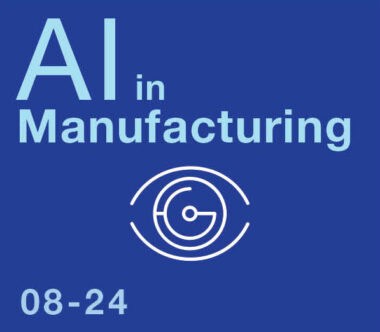
TAKEAWAYS:
● Generative AI may be an important next step in the manufacturing industry’s digital transformation journey.
● Generative AI is expected to offer immense potential in areas such as product design, talent development, aftermarket services, and supply chain management.
● Manufacturers seem to be investigating the possibilities of generative AI through several use cases across the business that could help to add significant value to their operations.
Technology is poised to play an even greater role in supporting manufacturers as they tackle current and future challenges. With a persistent search for efficiency and focus on building resilience across their organizations, many manufacturers look to continue to pursue their digital transformation objectives—even as some may be considering pausing investments because of the challenging business environment. Most companies surveyed in the 2023 Deloitte and MLC industrial metaverse study1 have made significant investments and are generally either implementing technologies like data analytics, cloud computing, artificial intelligence (AI), 5G, and Internet of Things across multiple projects and processes, or they are currently experimenting with one-off projects (Figure 1). The same is true for digital twins, 3D modeling, and 3D scanning. Companies also seem to be embracing a smart factory approach, exploring the industrial metaverse, and investigating the possibilities of generative AI as tools to add value to their operations.2
Figure 1: Surveyed manufacturers have invested in the technology foundation for the industrial metaverse
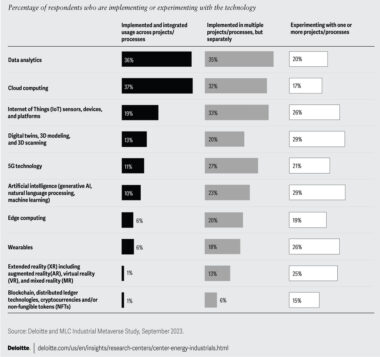
The potential benefits of smart factories are vast—ranging from gains in asset efficiency, labor productivity, and product quality to substantial cost reduction, along with the advancement of the cause of safety and sustainability.3 According to the 2023 Deloitte and MLC industrial metaverse study,1 92 percent of surveyed manufacturers are already experimenting with or implementing at least one metaverse-related use case. Executives surveyed anticipate an increase of 12 percent or more in several key performance indicators, including sales, quality, throughput, and labor productivity because of industrial metaverse initiatives.1
One of the latest additions to this digital transformation drive is generative AI, which is expected to hold immense potential in areas such as product design, aftermarket services, and supply chain management.2 It could lead to reduced costs across manufacturing organizations and potentially serve as another tool for navigating a challenging labor market.
Generative AI can be considered a new frontier in digital transformation in manufacturing. Given the immense scope of this technology, we highlight several generative AI use cases throughout manufacturing.
Developing Employee Training
Companies can use generative AI to customize training materials based on specific job roles, site conditions, or regulatory requirements. It can analyze large volumes of data, such as incident reports, occupational health and safety (OHS) guidelines, or compliance standards, and generate tailored content. Combined with virtual reality (VR), generative AI can be used to develop virtual training environments that replicate operational conditions, helping trainees navigate hazardous situations, and improve their OHS awareness and response capabilities in a safe setting.4 The flexibility in technology-facilitated training can also enable individuals to upskill at their convenience, helping to foster a more dynamic and efficient learning environment.
Optimizing Product, Process, and Facility Design
Leveraging technologies like computer vision, generative AI, drones, and digital twins enables data-driven optimization of manufacturing processes and product design. These solutions can optimize production lines and streamline product design, leading to faster time-to-market and reduced costs. For instance, simulating hurricane winds on a wind turbine’s digital twin lets engineers adjust its design for stability under extreme conditions.5 Generative design can enable product development teams to create and visualize multiple alternatives of a new 3D product design based on input constraints such as weight, performance requirements, strength, material, cost, etc. The benefits can include optimized products, cost savings, and accelerated product innovation.2
The number of manufacturing establishments in the US grew by more than 11 percent between the first quarter of 2019 and the second quarter of 2023, approaching 393,000 by the end of the period.6 Construction spending in manufacturing—that is, dollars invested to build new or expand existing manufacturing facilities—has more than tripled since June 2020, reaching a new record high of US $228 billion in April 2024.7 As companies expand and build new manufacturing facilities, generative AI can automate certain aspects of the site design process, provide designers with a multitude of design options, and help reduce time, cost, and emissions during construction.8
Enhancing Supply Chain Management
Generative AI could help identify and simulate potential disruptions or risks in the supply chain from publicly available data and supplier data. By assessing port congestion, shipment routes, and tier supplier mapping, generative AI could predict potential risks and their corresponding impact on operations, and recommend actions such as rerouting shipments, adjusting maintenance plans, or triggering stock transfer. It could allow supply chain managers to proactively implement mitigation strategies, develop contingency plans, and help improve overall resilience.4
Enriching Aftermarket Services
A strong aftermarket presence can serve as a significant source of revenue, signal a commitment to long-term product reliability, and increase customer satisfaction. The lockdowns following the pandemic highlighted some of the challenges, costs, and inefficiencies of dispatching field service technicians to address customers’ critical repair and maintenance needs to maintain product uptime and optimal operation. Digital technologies that enable remote assistance can become important in ensuring business continuity.8
For example, a generative AI-enabled virtual field assistant can serve as a reference tool and provide quick access to a vast amount of technical information. When encountering issues or challenges in the field, for example, with an in-service product, engineers or technicians can describe the problem to a virtual field assistant and it will return appropriate questions to identify the cause or provide step-by-step guidance for resolution.4
Conclusion
The rise of generative AI could mark a pivotal moment in the manufacturing industry’s digital transformation. Companies are actively exploring generative AI’s potential for enhancing efficiencies and are working on solutions to harness this technology to suit their business needs. Manufacturers could improve their business outcomes by experimenting with generative AI use cases throughout the organization.
This article contains general information only and Deloitte is not, by means of this article, rendering accounting, business, financial, investment, legal, tax, or other professional advice or services. This article is not a substitute for such professional advice or services, nor should it be used as a basis for any decision or action that may affect your business. Before making any decision or taking any action that may affect your business, you should consult a qualified professional advisor. Deloitte shall not be responsible for any loss sustained by any person who relies on this article. M
References
1. Paul Wellener, John Coykendall, Kate Hardin, John Morehouse, and David Brousell. “Exploring the industrial metaverse.” Deloitte, September 13, 2023.
2. John Coykendall, Kate Hardin, and John Morehouse. “2024 manufacturing industry outlook.” Deloitte, October 30, 2023.
3. Deloitte. “Smart Factory for Smart Manufacturing.” 2024.
4. Deloitte AI Institute. The Generative AI Dossier. 2024.
5. Stanley Porter, Animesh Arora, Jean-Louis Rassineux, Kate Hardin, and Anshu Mittal. “Boosting industrial manufacturing capacity for the energy transition.” Deloitte, May 13, 2024.
6. Deloitte analysis of data from US Bureau of Labor Statistics. “Quarterly Census of Employment and Wages.” accessed March 21, 2024.
7. Deloitte analysis of “Construction Spending – Data” from the U.S. Census Bureau, accessed June 14, 2024.
8. Paul Wellener, Kerry Millar, Oliver Bendig, and Aijaz Hussain. “Aftermarket services.” Deloitte Insights, May 14, 2020.
About the authors:

John Coykendall is vice chair, Deloitte LLP.

Kate Hardin is the executive director of Deloitte’s Research Center for Energy and Industrials.

John Morehouse is the research leader for industrial products manufacturing in the Deloitte Research Center for Energy & Industrials.

Kruttika Dwivedi is a manager for the Deloitte Research Center for Energy and Industrials.
Welcome New Members of the MLC August 2024
Introducing the latest new members to the Manufacturing Leadership Council


Mike Critchlow
VP, North America Supply Chain
Valvoline
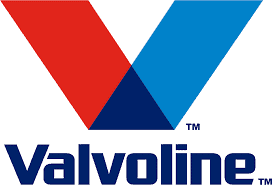
https://www.valvoline.com/
![]()
https://www.linkedin.com/in/mike-critchlow-2a584a6/

Daniel Dempsey
Senior Director of Manufacturing Engineering
New Balance

www.newbalance.com
![]()
https://www.linkedin.com/in/danielpdempsey/

Esther Galantowicz
Chief Commercial Officer
TXI Digital
![]()
https://txidigital.com/industries/industry-4.0
![]()
https://www.linkedin.com/in/estherg/

Jay Mehta
Head of Manufacturing Engineering, Integration & Automation
First Solar

https://www.firstsolar.com/
![]()
https://www.linkedin.com/in/jay-mehta-425725a/

Tim O’Neal
Global Operations Director for Operational Excellence and Leveraged Services
Dow, Inc.

https://www.dow.com/
![]()
https://www.linkedin.com/in/tim-o-neal-6269a864/

Ethan Ott
North America Manufacturing Strategy Director
Whirlpool Corporation

https://www.whirlpool.com/
![]()
https://www.linkedin.com/in/ethan-ott-75b88283/

Dave Riordan
Vice President and Site Head Limerick Biologics
Eli Lilly

https://www.lilly.com/
![]()
https://www.linkedin.com/in/davelillylimerick/
Sensible Advice for the New Wave in Decision Systems

Preparing for manufacturing’s AI revolution requires security, teamwork and data literacy to navigate new technological landscapes

TAKEAWAYS:
● AI Integration and Security: The deployment of AI in manufacturing requires careful consideration of security measures, including secrets management.
● Empowering Workers with Data Literacy: Successful AI implementation hinges on involving daily operators, developing security champions and promoting data literacy among workers.
● Infrastructure and Network Adjustments: The shift towards AI-driven manufacturing necessitates significant changes in infrastructure, including increased internet connectivity and changes to network security architecture.
As artificial intelligence arrives for manufacturing but it does not require hasty sacrifices in operational security. The technology spans a variety of use cases and personas, including predictive maintenance, supply management, and customer service. Expect AI to come with major changes to architecture, such as demand for greater public internet connectivity, leading architects to revisit security architecture. With such sweeping change the challenge becomes how to accept these new opportunities to improve the business, while managing the risks without giving up the whole game. For example, one can choose OT monitoring systems to observe the internet-connected sensors that drive many digital twin projects. Beyond the quick wins, leaders should offer autonomy and support to their plants’ operations experts, to team with these new tools, and give them the resources to evaluate their estate using a data-driven approach that coheres to the AI program’s assumptions.
AI denotes the use of computerized decision systems to drive tasks that would otherwise use human intellect1. Sensors for these systems can span a range of inputs and would be positioned throughout the factory floor2. Ranging from heuristics to statistical learners and large language models3 — the factors in developing an optimal decision system often depend on system specifications and learning objectives. Most systems are designed explicitly for teaming between subject matter experts and the underlying learners, so the interfaces of these systems depend on their technical requirements4.
On the factory floor, there are three prospects for transformation. First, is the notion of digital twins5 and intelligent factories, which uplifts product lifecycle management into a fully computerized realm. Practically, this implies wide scale sensor deployments and ubiquitous availability of engineering computers, handheld, and personal devices. Second, is the increasing use of analytics to control supply chains and inventory. The state of the art has grown from ABCD analysis in the context of lean manufacturing, and into forecasted reorder systems and predictive maintenance regimes6. Automated support equipment is more likely to produce metadata, implying connectivity to processing grids designed for analytics7. Third, is the increasing use of customer feedback to optimize field operations. Call lines are increasingly centralized into virtualized equivalents of physical systems, with calls and e-mails being transcribed and feeding Voice of the Customer systems8. Data that was typically solely reserved for the back office is now available everywhere.
Regard the deployment of AI in your manufacturing environment as an opportunity to serve your daily operators as customers who require buy-in to execute your roadmap
To meet the challenge of transformation, infrastructure changes will come to the factory floor. Many sensors will need internet access to send communications to cloud-hosted brokers. This traffic can be proxied via self-hosted infrastructure, broadening access previously dedicated to the plant’s workload. Operations will also have to abide by a broadening raft of data sovereignty rules9. As the data bandwidth increases, companies will also find themselves racing to keep their key contributors appraised with the new systems. Engineers will have to become familiar with new protocols, cloud services, and most challenging of all, the analytical assumptions for these new decision systems10.
There are huge security trade-offs with the revolutionary changes discussed above. Enterprises should be prepared to proxy internet enabled devices. Certain applications need direct internet access and may cease functioning when routed through a proxy. Operators should be aware that those same devices will demand far more network bandwidth than prior. Network perimeter audits will have to scale with the added traffic and expanded blast radius. Bad actors may find additional resources for lateral movement where networks have not been adequately segmented. The use of additional systems of record also increases the risks posed by shared secrets, a challenge illustrated by the unprecedented data leak Snowflake customers face today11. AI systems have complex software dependencies that compound hardware and software BOM data collection. This creates a stark paradox given that the nature of recent high severity vulnerabilities, such as with LangChain12, are simple and can be exploited with little novelty on an adversary’s part. Finally, AI systems operate based upon a variety of approaches to data analysis, which can vary from simple decision trees and logistic regression models to large language models and other so-called overparameterized models. Regardless of these systems’ methods, retaining personnel capable of interpreting their output is crucial for good outcomes.
There are ways for operators to be prepared for the challenges of direct access, greater data egress, expanding vulnerabilities, and added areas of special expertise needed to operate. Be it through architectural adjustments or unlocking new areas of technical expertise, the following advice draws from primary sources that are indispensable for manufacturers. These are the SANS Five ICS Critical Controls whitepaper as well as the NIST guidance for manufacturing (most notably, SP 1800-10 and the manufacturing framework profile)13.
The crucial resource is humans, and if you intend to fund AI solutions on the factory floor, be sure to also invest in your workers’ data literacy
A finding in common with SANS and NIST publications is that defensible architecture depends on definitive logging on networks. This can mean further transport and analysis of firewall logs, but also recognizes that perimeter firewalls have little insight into internal networks, including remote access sessions or resulting traffic and actions within the OT environments. Fortunately, there are many first- and third-party solutions that can help detect threats on the perimeter, particularly in secure access areas14. The challenge becomes detecting threats that have made it beyond the perimeter. Secrets management programs can also help manage the blast radius by reducing secret reuse. Finally, one should invest in an asset monitoring program that tracks vulnerabilities, rewards patching discipline, and concentrates on risk mitigation for systems where patching is not possible. OT monitoring systems such as the Dragos Platform can build a bridge from ingress logs to a plant’s historians and other internal measurements, adding context in the case of a breach and maximize ICS network visibility. Having a registry of OT assets also allows one to focus their attention on the systems with the greatest effect on plant operations. Such a registry is typically a deliverable from a crown jewels analysis, a systematic, OT-focused threat analysis workshop15. In addition, canary token programs, where one issues a token that is tracked but does not provide deep access, is a useful approach to find areas of exposure16.
Just as creating shared ownership is a cornerstone to operating a security culture, growing shared technological expertise is the strongest means of hardening an environment subject to uplift by AI. The major theme for achieving this is to regard the deployment of AI in your manufacturing environment as an opportunity to serve your daily operators as customers who require buy-in to execute your roadmap. While it is typical for consultants or a center of excellence to develop AI systems, it is crucial that ideation includes these operators at all steps of the requirement gathering process. These operator roles can span from technicians and fabricators who assemble parts, the designers and engineers who specify drawings, all the way to inspectors and process analysts who keep the plant safe and thrifty. From these ranks one should identify champions as those who enjoy systems and/or security thinking, are empathetic for the conditions of their teammates, and are motivated to teach their findings.
Developing security champions for AI should not be treated as any other milestone. Getting buy-in from contributors will imply investing in education, not just for the AI system you are running, but also general data literacy and context for security architecture. The intuition for teaming with your individual contributors should be that AI is most effective in construction as a human-in-the-loop system17. The individual contributor should become more introspective about their operations such that it expresses growing data literacy. Leaders should reward examples of data literacy every day. For example, it is common for operations staff to know what typical levels look like, sometimes with greater detail than the equipment’s operating parameters. Challenge these experts to define these parameters formally via control charts, to impart this additional precision systematically18. Such a study applies just as effectively for AI-driven systems as well — one may consider this as calibration for the system. Finally, these findings have security implications too. A well-quantified baseline for normal activity in a plant is crucial for timing security response as well.
The winds of change in manufacturing tend to be steady and strong rather than sudden and violent, and this extends to AI. There will be deployments of troves of sensors, and greater networking of extent devices, which on the security front, means increased risk. More effort should be spent auditing traffic to the public internet and isolating important data and credentials. Security platforms, solutions, and services can be utilized for this effort, and OT-focused offerings such as the Dragos Platform and crown jewels analysis will be most in tune with your plant’s specific needs. The crucial resource is humans, and if you intend to fund AI solutions on the factory floor, be sure to also invest in your workers’ data literacy. Common awareness of the new operational norms and security architecture of your AI solutions will go a long way into hardening your environment as it becomes more efficient. M
Footnotes: 202408_MLJ_Dragos_Footnotes
About the author

Jonathan Reiter is a Principal Engineer at Dragos Inc, where he has been since 2020. In his career he has contributed to router firmware, antivirus telemetry systems, industrial demand forecasting modules, and tagging systems for 737 fuselages for use on the Boeing Renton Factory floor.
20 Scenes from the 20th Anniversary of Rethink and the ML Awards Gala

The Manufacturing Leadership Council, a division of the National Association of Manufacturers, hosted a record number of attendees at the 20th anniversary of Rethink, its signature event. Rethink continues to focus on helping manufacturing companies accelerate their digital manufacturing journeys.
The Manufacturing Leadership Council hosted the 20th iteration of its signature Rethink event in early June at the JW Marriott hotel in Marco Island, Florida. Nearly 900 manufacturing executives, a record, participated in the event over the course of its three days, which consisted of MLC’s annual Council Day meeting, its two-day conference program, and the Manufacturing Leadership Awards gala.
The theme of the event was Accelerating Digital Transformation in Manufacturing. Speakers hailed from Johnson & Johnson, Saint-Gobain, Northrop Grumman, Eaton, Flex, Campbell Soup Co., Protolabs, and the World Economic Forum, among others.
A Women’s Manufacturing 4.0 Networking Luncheon and Panel Discussion, a first for the event, was held as was a session with leading industry analysts. EY gave an overview of economic trends affecting manufacturing. More than 20 technology and service providers demonstrated their innovations. And at the awards gala, more than 150 companies and individuals were honored for their achievements in digital manufacturing.
Following are selected scenes from the 20th anniversary Rethink event.
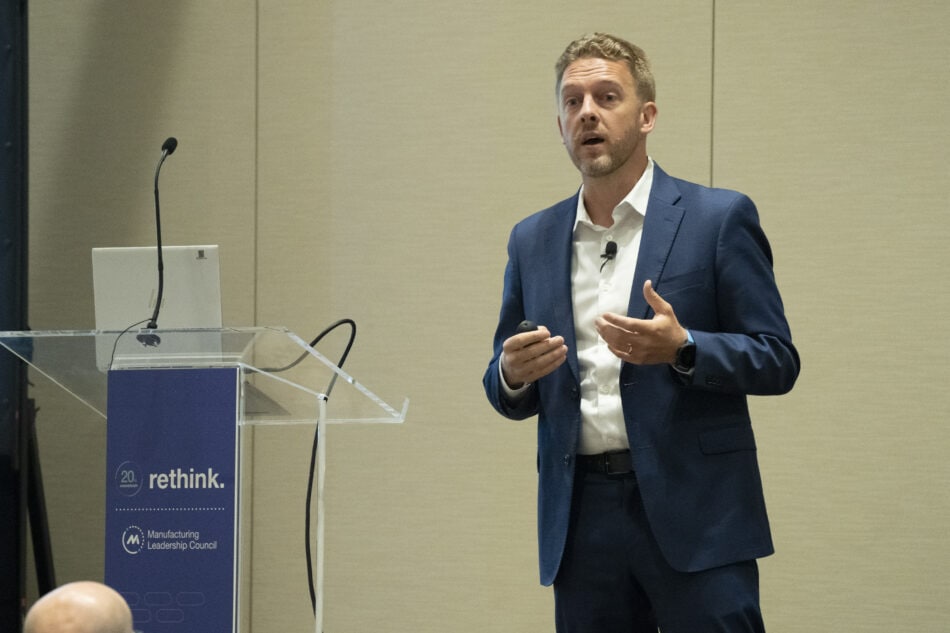
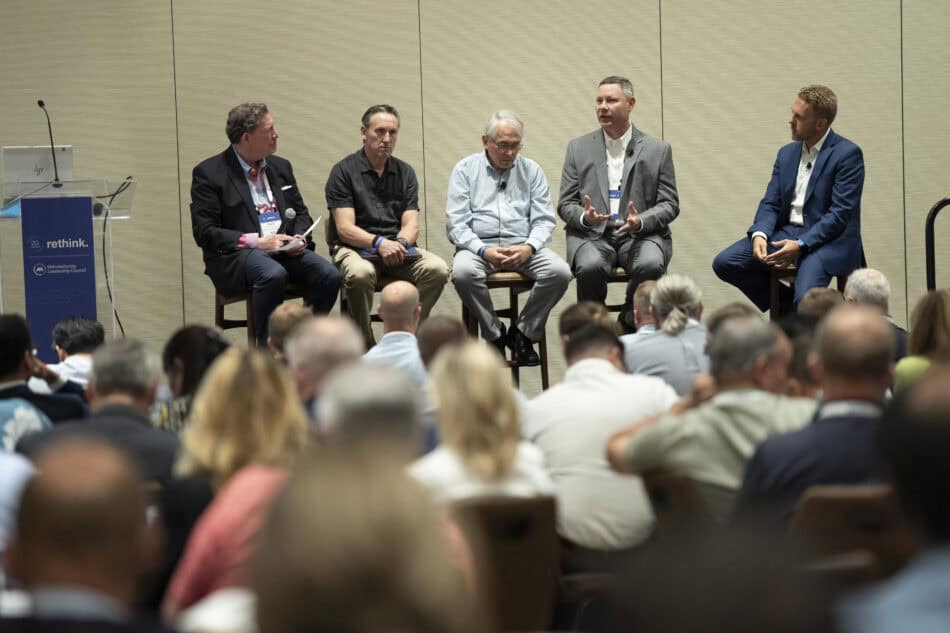

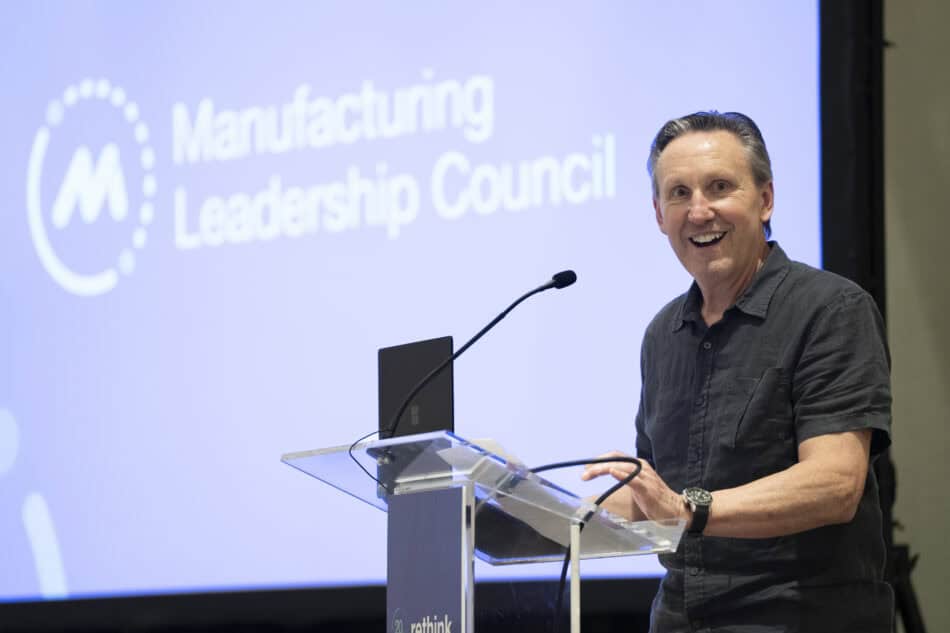
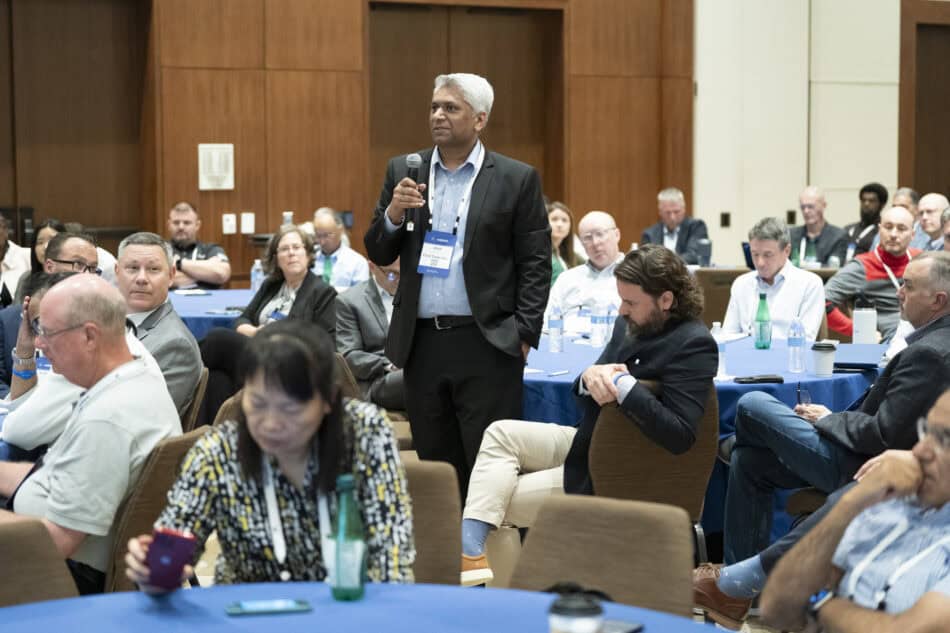
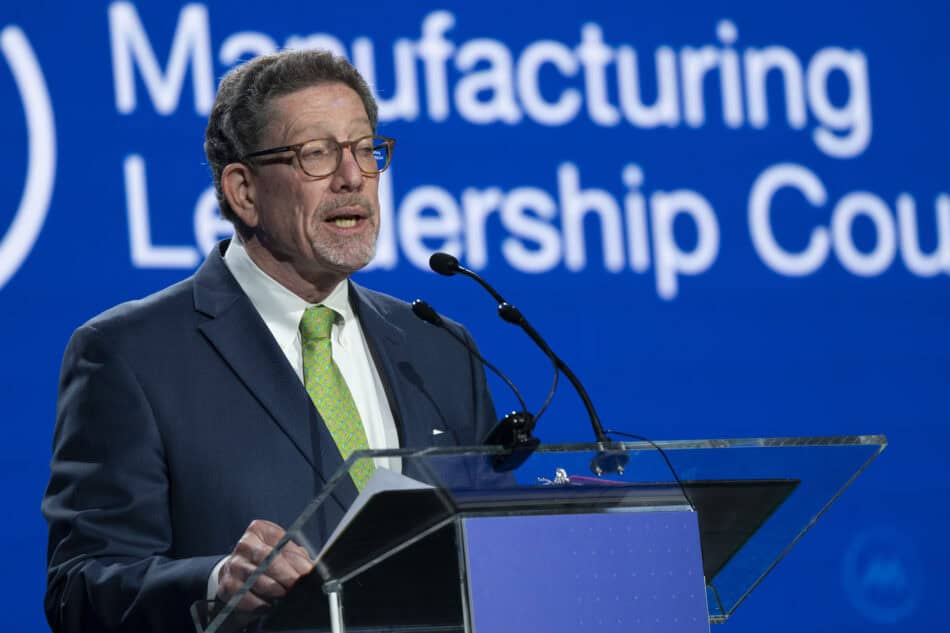


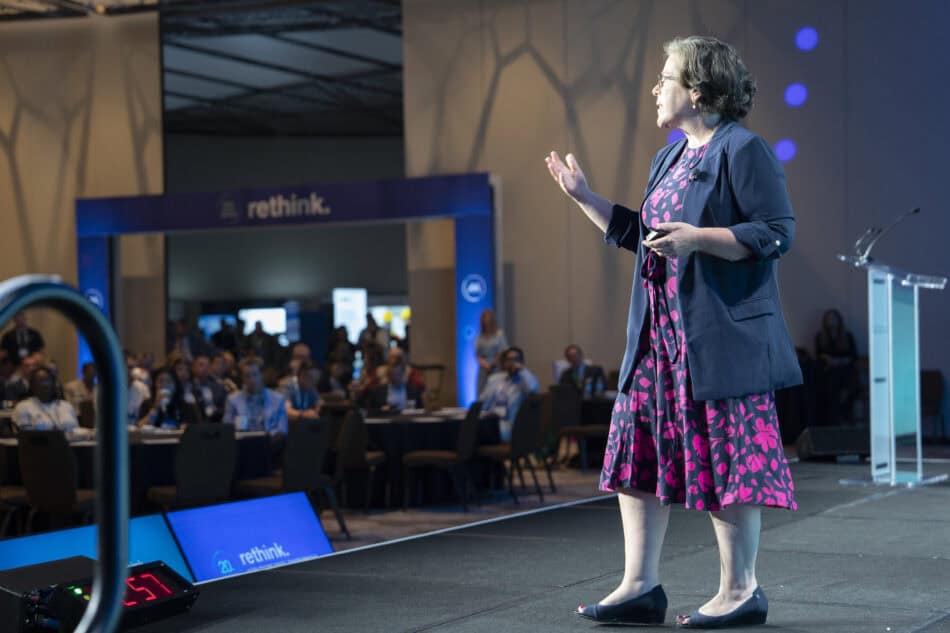
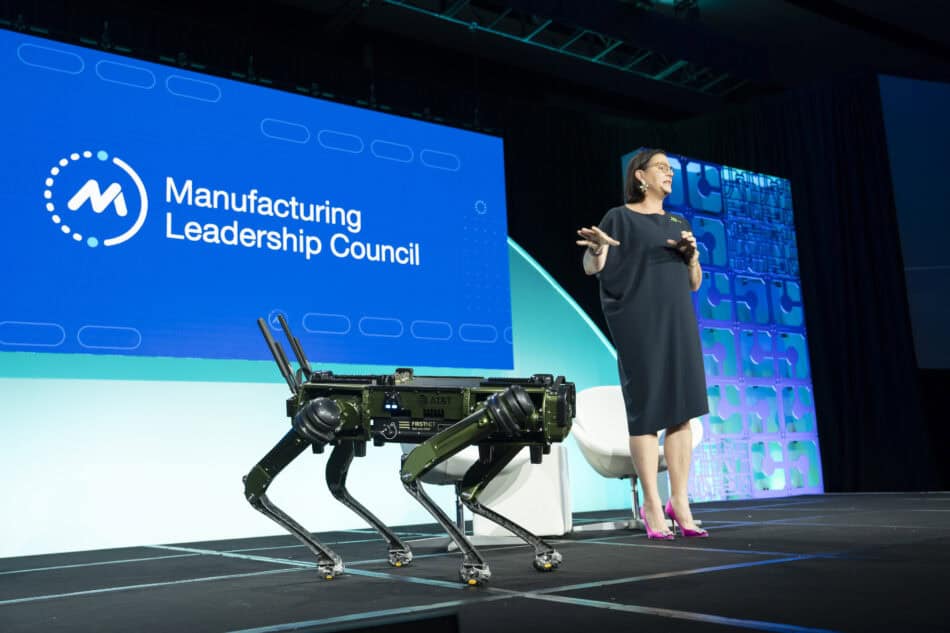
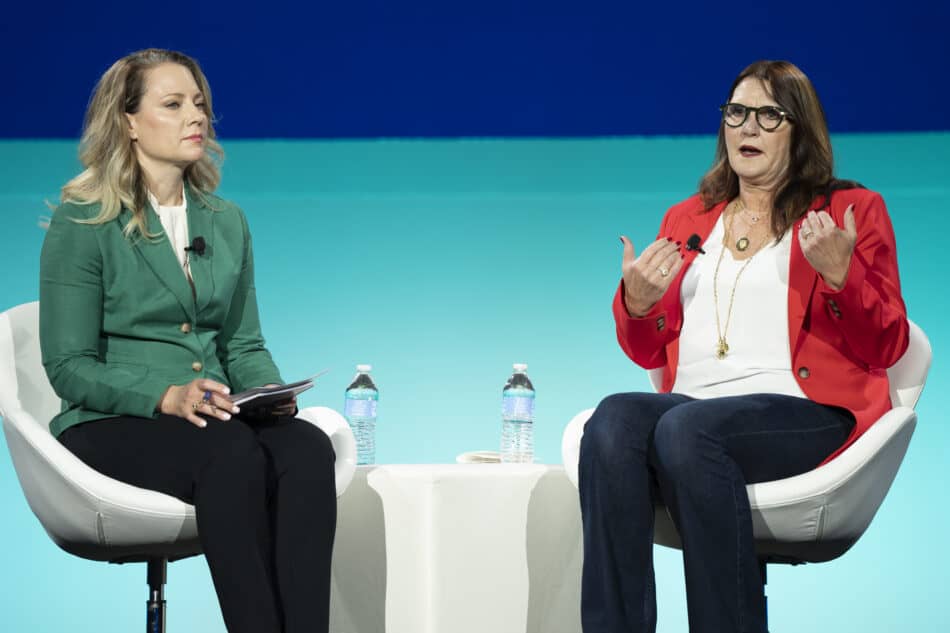

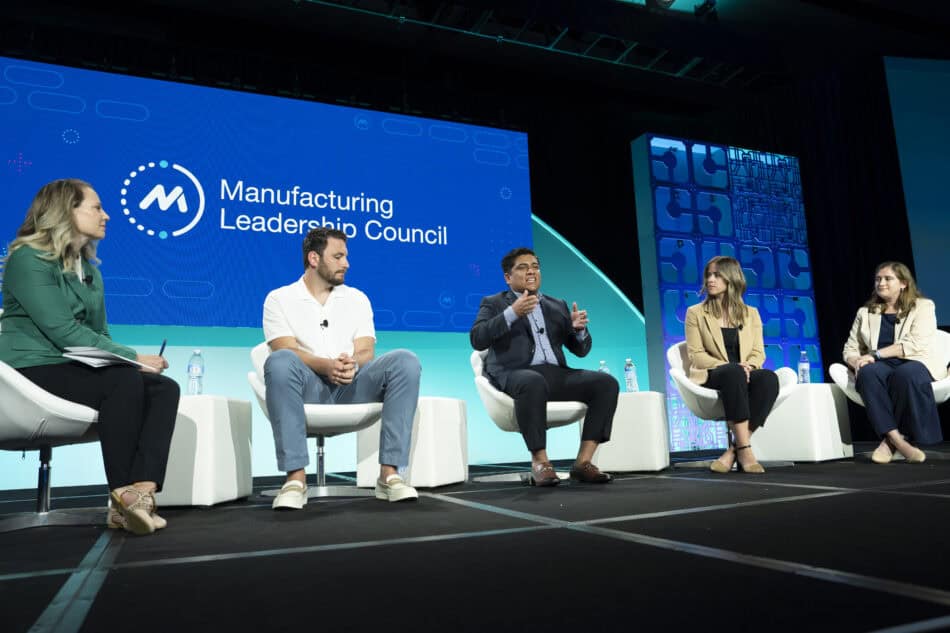
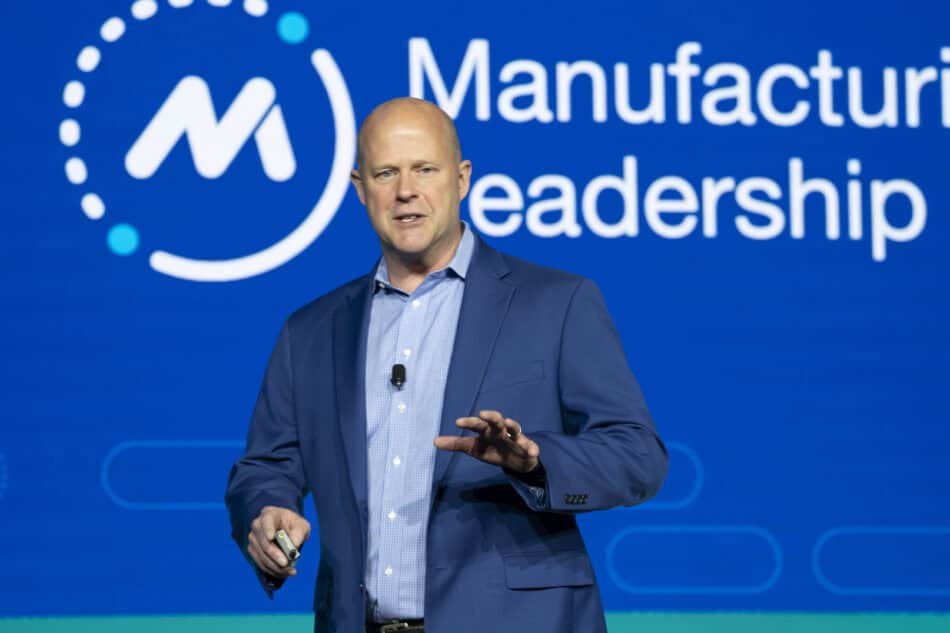
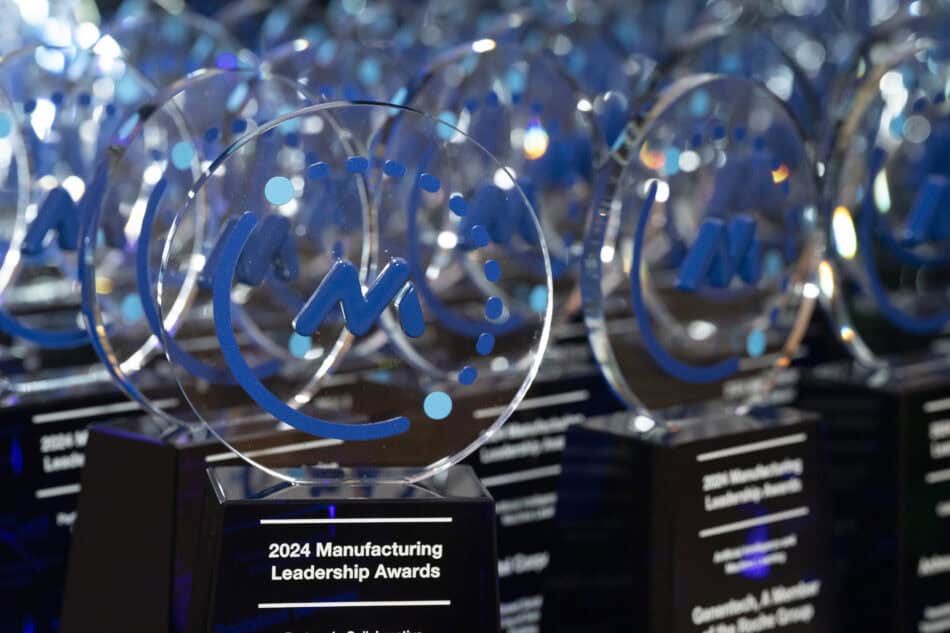

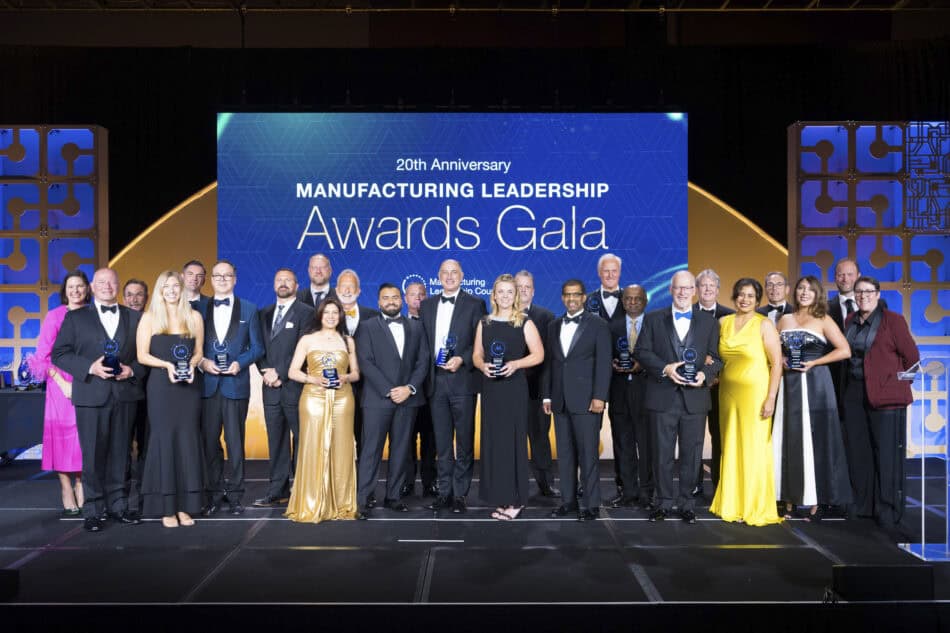
Award finalists gather on stage with their trophies.



How Manufacturers Can Win With Industrial SaaS Business Models
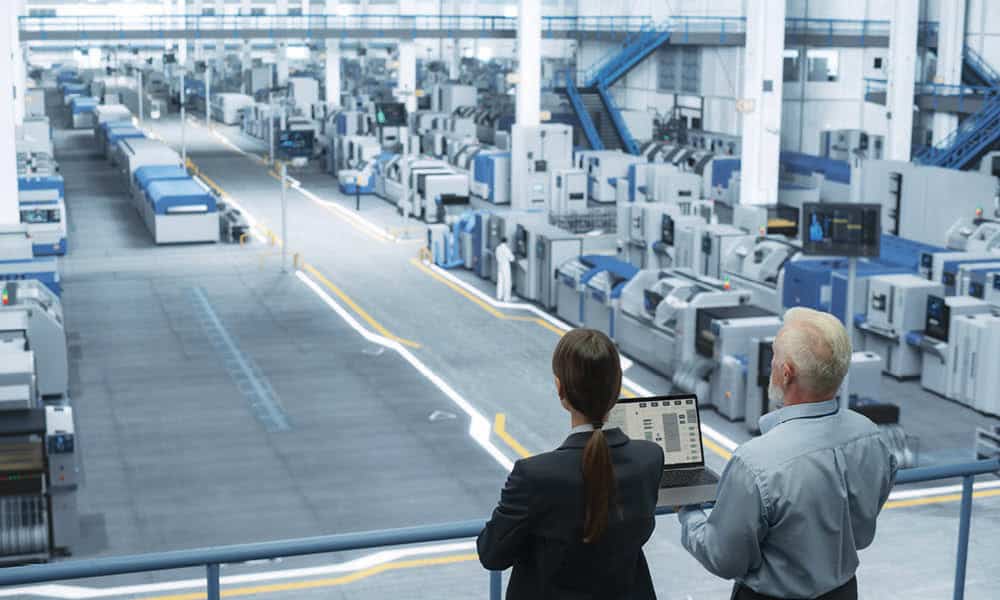
Providing software-based services offers manufacturers new avenues of profitable growth.

TAKEAWAYS:
● Industrial SaaS revenues generate margins two to five times that of traditional manufacturing businesses.
● Manufacturers with successful SaaS businesses share four traits: products with impact, relevance, connectivity, and deep customer relationships.
● CEOs can apply BCG’s six-pronged framework and review its latest report to develop winning industrial SaaS business models.
Industrial companies’ Software as a Service (industrial SaaS) ambitions have reached a tipping point. As many as 55 percent of North American manufacturers plan to use industrial SaaS business models as a source of growth, according to a recent survey conducted by the Manufacturing Leadership Council.
The reasons are obvious. Traditional avenues of growth for manufacturing businesses are becoming limited; products and systems are all connected and generate large volumes of data today; and industrial SaaS models are financially attractive, both in terms of margin and valuation multiples.
Although the opportunity is well known, only 15 percent of manufacturers have had success in building a significant industrial SaaS business, according to the same survey. Clearly, there’s a large gap between ambition and reality.
If you’re the CEO of a manufacturer looking for new avenues for growth, how do you start building an industrial SaaS model that will change your company’s growth trajectory?
Why Industrial SaaS is Future Critical
Many manufacturers have exhausted traditional opportunities for growth, such as market share and geographic expansion, and are exploring industrial SaaS as a next-generation growth platform. Rapid advancements in product and system technology that go beyond data availability to scalable ways that leverage data—AI and generative AI among them—have made industrial SaaS businesses technologically viable today.
The benefits are evident. Industrial SaaS revenues are more profitable than conventional ones, with margins two to five times that of traditional businesses. They’re less cyclical, too, with subscriptions less likely to churn than product sales. And they generate revenue multiples in the stock markets that are two to five times larger than those of the core business.
“Industrial SaaS models are financially attractive, both in terms of margin and valuation multiples.”
Recent BCG research highlights three key reasons why manufacturers have reached an inflexion point with industrial SaaS business models, and why we suggest starting with them now. First, the first-movers have tasted success. Between 2020 and 2023, companies with significant service revenues grew between 1.5 and 2 times faster than traditional manufacturers did.
Second, investors’ expectations are rising. A BCG analysis of around 100 manufacturers’ earning calls revealed a 15 percent growth rate in conversations with investors on industrial SaaS models, while traditional product-related topic discussions have fallen every year.
Third, investors want to see industrial SaaS businesses scale before they fully reward the strategy in terms of multiples. Another BCG analysis reveals that the business must grow to around 20 percent of a company’s enterprise value before investors will grant higher multiples.
Pioneering Successful Industrial SaaS Models
Consider two successful transitions to industrial SaaS business models, one by a large multinational manufacturer and another by a smaller regional player.
A $50-billion industrial equipment manufacturer has, over the past 15 years, increased the on-board telematics, connectivity, and machine-vision capabilities of its machines as well as its data capture and processing abilities. That has allowed the company to rewrite its corporate strategy in terms of creating fresh customer value through machine and job optimization. The manufacturer is delivering new solutions to customers and has set a goal for its industrial SaaS business to cross 10 percent of revenues by 2030.
A $300-million industrial automation market leader designs, builds, and services refrigeration systems across the US. Leveraging its market leadership and large installed base, the company has developed an AI-powered, data-driven, digital service technician platform. Using the platform reduces clients’ maintenance, repair, and operations costs, and provides them with a three to five times return on investment in the platform. This company, too, expects its industrial SaaS business to account for over 10 percent of revenues in the near future.
“Between 2020 and 2023, companies with significant service revenues grew between 1.5 and 2 times faster than traditional manufacturers did.”
Like these two companies, manufacturers that have successfully created industrial SaaS-based businesses share four characteristics. As a starting point, check whether your company meets these four criteria as you plan your transition:
- Impact––Your products measurably affect customers’ operations and improve their bottom lines.
- Relevance––Your products are a large contributor to customers’ operations in terms of criticality, cost, and/or performance.
- Continuous Upgrades––Payments for services on an ongoing basis require continuous value delivery that must improve over time (think software upgrades).
- Customer Relationships––You have close, long-term relationships with end users that provide deep insights into customer needs and behaviors.
How to Build a Winning Industrial SaaS Business Model
The technology is available, the upside is obvious, and the pioneers have experienced success. To act on the industrial SaaS opportunity, BCG has developed a six-pronged framework for CEOs:
- Identify opportunities by customer value unlock.––Quantify this value to determine if the payoff is worth the effort and for which customers. Then, set a bold vision with value-unlock targets, and communicate them across the organization. This will tell you where to focus.
- Use bundling to refine your go-to-market strategy.––Simplify your offer map and create bundled offerings. Bundling is a proven way to increase customer acquisition, facilitate cross-selling, and improve customer retention.
- Define and build the tech stack.––To support an industrial SaaS model, your company will need Internet of Things (IoT), customer relationship management (CRM), and enterprise resource planning (ERP) systems, data analytics, cloud computing platforms, cybersecurity, hardware, and connected products, all working in concert, not in silos. Consider the compatibility between existing and future products and systems, scalability, and the potential to meet future needs. Establishing a vision for the tech stack early is critical to ensure resources aren’t wasted.
- Use M&A proactively and opportunistically.––To build momentum, companies must be prepared to acquire products, capabilities, and talent to address new needs. Some manufacturers have made acquisitions to plug into existing channels and to house all their industrial SaaS operations in one place, among other reasons.
- Invest in delivering customer outcomes.––Companies will have to build industrial SaaS-specific sales motions such as land and expand; learn to focus on ensuring customer success; and develop the capabilities to provide software updates that improve customer performance over time. Lifecycle product management requires a different operating model that usually stretches most hardware-focused industrial companies.
- Specify the new talent and capabilities needed.––The talent needed to succeed with industrial SaaS models at scale is different than those manufacturers usually possess. Upskilling existing teams and becoming an attractive landing spot for digital talent are both difficult, but essential steps.
To delve deeper into how companies can execute an industrial SaaS strategy, please see Playing to Win in the Industrial Software as a Service Revolution.
The good news is that you don’t need to execute all these steps at once. You can sequence them in digestible bits over time according to a roadmap. A CEO can start by asking the strategy and business development team to define what an industrial SaaS strategy could look like for the company before aligning a plan with the leadership team.
But the time to start is right away. M
Authors Bios:

Merih Ocbazghi is a managing director and partner in BCG’s Chicago office. He is a core member of BCG’s Industrial Goods practice in North America, with specialization in strategy topics.

Katherine Smith is a managing director and partner in the firm’s Atlanta office. She is a core member of BCG’s Industrial Goods practice in North America.

Jonathan Van Wyck is a managing director and senior partner in the Minneapolis office of Boston Consulting Group. He leads the Industrial Goods practice for BCG in North America.
Building Better: AI as the Fast Track to 4IR Technology Adoption

The Fourth Industrial Revolution is set to enter hyperdrive as generative AI and other AI tools prove their value in manufacturing and spur the adoption and time to impact of other technologies.

TAKEAWAYS:
● AI’s impact is bigger than a combination of use cases, able to orchestrate the complex interplay of a range of platforms, devices, and environments.
● The impact of gen AI is extending beyond the shop floor.
● Manufacturers that have already invested in their data foundation and infrastructure will be better placed to move quickly with AI and gen AI.
We now have enough evidence that AI is fundamentally transformational for manufacturing, when implemented correctly. This is perhaps best illustrated in the Global Lighthouse Network; a community of manufacturers using Manufacturing 4.0 technologies to transform factories, value chains, and business models.
The most recent cohort of Lighthouse factories has seen compelling returns from AI—both traditional AI tools such as machine learning for yield optimization, and generative AI. Individually observed results range from a two to three times increase in productivity and a 50 percent improvement in service levels to a 99 percent reduction in defects and 30 percent decrease in energy consumption.
But AI’s impact is much bigger than the combined impact of individual use cases. Its true power may come from its position at the top of a pyramid of Fourth industrial Revolution (4IR) technologies, from where it can orchestrate the increasingly complex interplay of wearables and devices, flexible robotics, integrated platforms, and cloud environments.
Putting AI at the top of the technology pyramid effectively allows it to conduct a symphony of impact by unlocking the full value of 4IR technologies (Exhibit 1).
Exhibit 1
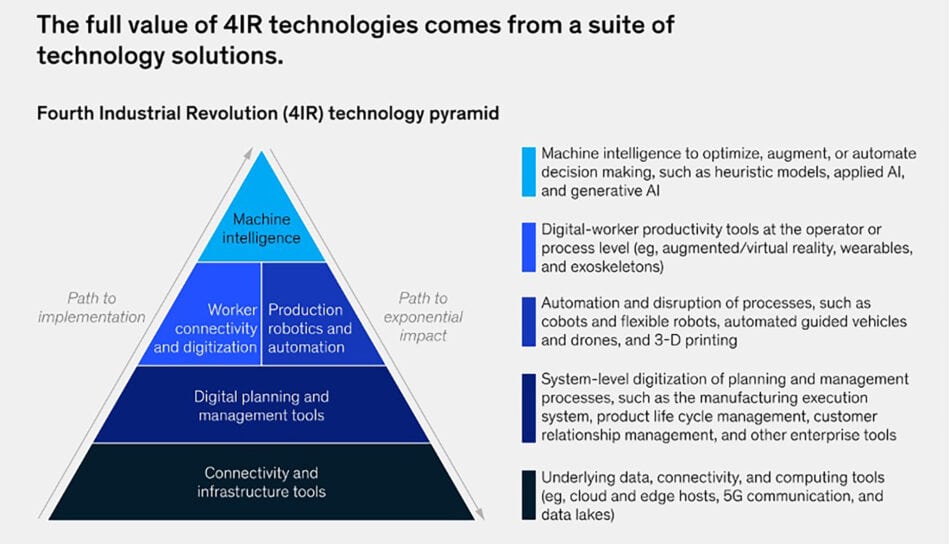
Generative AI is only going to amplify AI’s machine intelligence capability and speed up the digital transformation of manufacturing. Those manufacturers who have built up knowledge, skills, and data foundations to support their ongoing 4IR transformations will be first out of the blocks with gen AI, too.
Speed and scope: Generating results from AI and gen AI
The ongoing AI adoption journey among Lighthouses reveals five insights into how frontrunners are driving impact from AI and gen AI.
1. AI use cases are prolific across the whole operations value chain
While more than 80 percent of Lighthouse use cases involving AI are executed at the individual process level, AI is making a significant impact at every supply chain step—including planning, asset management, quality, and delivery. In quality, for example, VitrA Karo, a ceramics manufacturer in Türkiye, has decreased its scrap rate by 68 percent by deploying computer vision in its kiln. And in delivery, China Resources Building Materials Technology, a concrete and cement manufacturer, has optimized its heavy-transport equipment routes to decrease pickup lead times by 39 percent.
2. AI can be assetized to enable deployment at speed and scale
One of the ways that Lighthouses have sped past pilots is by packaging use cases for speed and scale of deployment, leveraging modular design principles to ensure interoperability with existing technology architecture. Agilent, a life sciences equipment manufacturer in Germany, assetized its computer vision technology into a tool kit that enabled five distinct computer vision use cases to be deployed, reducing defect rates by 49 percent in just four months.
3. AI command centers are enabling next-level and system-level automation
Lighthouses are prioritizing closed-loop feedback to improve their models and increase confidence intervals, while also integrating safeguards, monitoring mechanisms, and overrides to reduce risk. Mondelēz, a global snack-food manufacturer, has adopted an AI control center that spans five automated production lines, four intelligent guided vehicles, and nine ingredients in the supply chain—enabling it to optimize processes, analyze consistency, and improve capacity and speed across production lines and supply chains.
4. Gen AI is extending AI’s impact beyond the shop floor
Gen AI could be applied to automate nearly 70 percent of tasks across manufacturing and supply chain-related activities, primarily driven by new capabilities in content generation, insights extraction, and user interaction. New use cases involving unstructured data, like product development and procurement-related activities, could enable robust digital transformations to happen faster than the usually expected two to three years.
5. Gen AI is speeding past pilots, too
Today, the starting line for gen AI is far more advanced than it was for applied AI five years ago. The time it takes new Lighthouses to implement AI use cases has fallen by nearly 25 percent compared with earlier cohorts, and some are even skipping pilots altogether. ACG Capsules, a pharmaceuticals contract manufacturer in India, used gen AI to fully develop and deploy a copilot to interface with standard operating procedures (SOPs) in less than five weeks, reducing mean time to repair (MTTR) by 40 percent.
****
AI’s position at the top of the technology pyramid is expected to fast-track the adoption and optimization of 4IR technologies that make up the connected, intelligent factory of the future.
Those manufacturers that have already invested in their data foundation and infrastructure will be better placed to move quickly with AI and gen AI. And for manufacturers that have been slower to realize their 4IR ambitions, gen AI could be the technology wave that finally kickstarts their wider transformation journey.
****
The Global Lighthouse Network is a World Economic Forum initiative co-founded with McKinsey, identifying guiding lights that inspire transformational change, exemplify collaboration, and shape a better future for all players in the operations ecosystem. Learn more about the Global Lighthouse Network and how to benefit from the digital transformation playbook they have inspired by contacting the authors directly or by following the application process to be part of the next wave of Lighthouses, here. M
About the authors

Kevin Goering is a partner at McKinsey based in the Bay Area,

Enno De Boer is a senior partner at McKinsey in New Jersey.

Rahul Shahani is a partner at McKinsey based in New York.

Henry Bristol is a McKinsey consultant based in New York.